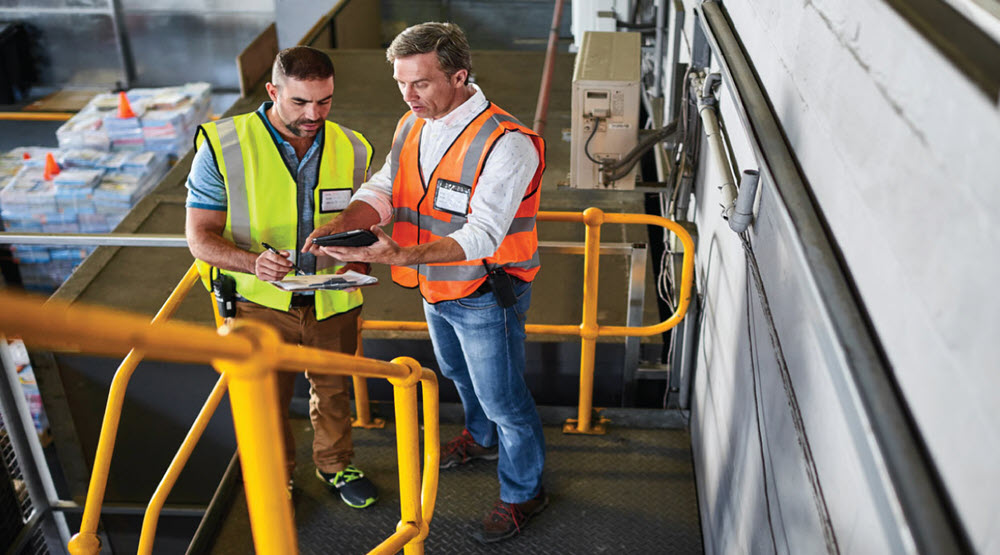If you run a construction company, occasionally, you might be required to go through your records and call for an audit. Also, clients, money lenders or investors could make a request for a construction audit program to be implemented, so as to make sure that their project is being completed according to the terms of contract and are in compliance with statutory and regulatory requirements. A construction audit program varies greatly from legal compliance to health and safety audits. However if a construction audit program is implemented efficiently, every audit is valuable to assists companies in identifying potential issues and risks on a certain job before the costs significantly exceeds the budget.
Items to Consider for a Construction Audit Program
Compliance to CE Marking
CE Marking is an important part and legal requirement the majority of suppliers within the construction industry has to follow. As the main contractor on a project it is necessary to ensure everything being supplied is compliant. For example for companies manufacturing and erecting the steel structure of a building, they have to follow all the requirements outlined in EN 1090. Another example is textile slings used for lifting which have to comply with EN 1492 in order to CE Mark their products. If you as a contractor does not ensure compliance and assume some cheaper slings imported from outside Europe have proper CE Marking, your organisation could end up with a major legal issue if an accident happened and even worse, have personnel injured on your site.
Significant Contracts
This particular procedure might seem obvious, however, it is necessary to ascertain the terms of the construction contract, the guarantees, incentives and penalties, and also any provision for postponement and cancellation. For examples, going through the contract may help to identify the team that is responsible for any extra expenses incurred due to weather delay, perhaps a winter which is colder than normal. The person carrying out the construction audit program has to read the contract carefully so as to identify contingencies or guarantees related with the project to find out whether the contractor gave proper consideration to the expense of fulfilling the contract guarantees. In addition, the auditor should confirm that the contract has been approved by the right company personnel.
The Percentage of Completion
The percentage of completion of a certain project could be essential for financial and billing purposes. Construction organizations frequently invoice their clients on a basis of level of improvement made on the project. The owner of the property might as well need to confirm the percentage of completion in order to receive draws from the construction loan. The personnel conducting audits in line with the construction audit program has to pay a visit to the project site to physically examine the site work and buildings so as to ascertain if the given percentages of completion are accurate. The auditor could also interview project managers and workers who have contributed to the construction project up to that particular phase. The amount and type of construction materials stored on the site could also be used to determine the percentage of completion.
Construction Materials
The construction materials made use of for the project has to meet the accepted standards for construction in that particular region. The personnel carrying out the construction audit program has to match the kind of construction materials on the project site with the information which is listed on the client invoices. This is to make sure that the prices of the materials are not cheaper than the quoted prices so as to increase profit. If less standard materials are found in the already existing buildings, the company, at their own expense might have to replace all of them with the exact quoted materials.
Environmental Problems
A construction audit program should also ensure that dangerous elements on the site of project are being handled properly. The team conducting the construction audits will have to analyse the procedures of the company for the safe removal of waste products and how accidental spills are contained to prevent any harm from coming to the workers or even the general public at large. If an incident has happened on the site, the auditor will evaluate the company’s documentation on the incident and how any employee that was exposed to the dangerous substances was treated.
Health & Safety
Every employee working with or around known hazards must have proper safety gear and this includes respiratory protection in regions with airborne toxins. Every equipment and tool has to be kept in good working condition with every protective guards properly installed. The project site should be vivid with emergency lights and warning signs, with the addition of a fence surrounding the perimeter to keep away thieves and pedestrians. Flags or barricades should be used to mark exposed trenches and the other hazards that might be hard to see. Electrical issues such as missing insulation, exposed wires, or even broken outlets cover might as well be discovered with the help of a construction audit program.
If you are looking for experienced auditors across various industries within the field of construction, then contact us for a free consultation. We have worked with large construction companies such as Laing O’Rourke and audited their suppliers for compliance to legal requirements and the ISO 9001 standard. Various industries such as steel structures, demolition, fire doors, dry lining & ceiling, environmental, lightning protection, lifts and many more have been assessed.


















